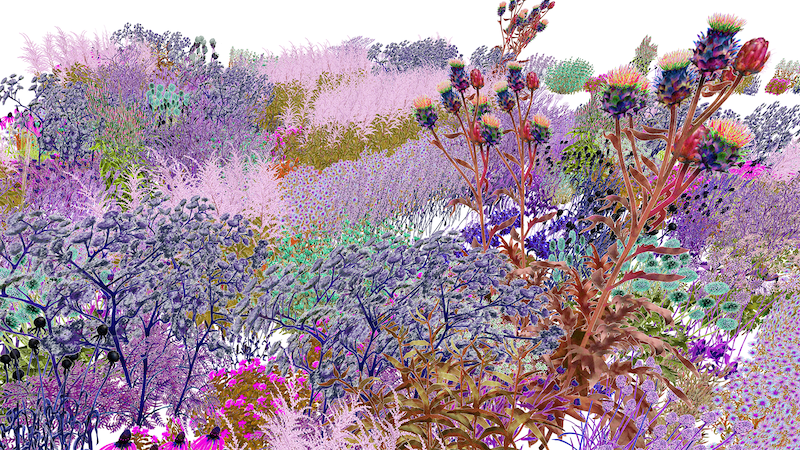The world's largest climate-positive artwork provides food and nesting spots via algorithm
It’s interesting that this is being conceptualised as an ‘artwork’ rather than a technological intervention. Perhaps this is the way to deal with the climate crisis, by bringing algorithms from the cold, sterile environment of technology into the warmer, more joyful world of art?
This multidisciplinary project by Alexandra Daisy Ginsberg explores the relationship between humans, nature, and technology and aims to draw attention to the importance of insects in pollination by creating an algorithmic solution for planting designs that serve a diverse range of pollinator species.
The project changes depending on location, debuting at the Eden Project in 2021 and includes 7,000 plants across 80 varieties. These provide food and nesting spots for insects with the aim to create the world’s largest climate-positive artwork.

This is not a natural ecosystem planted outside, there are plants from all over the world. With the expert group, we chose not to focus on native plants only because they are locally appropriate so they’re not invasive. So that’s the first thing—it’s an artificial landscape designed for nature, so it’s a very different way of creating an ecosystem. The other big challenge to the art world that I’m proposing is creating a climate-positive artwork. I also show in museums and I use digital media and that’s all very carbon-consuming. Here, we actually have an artwork fabricated in plants. It has its own climate impact because of the soil we’re moving, the plastic pots, the shipping of plants, but it’s here for at least three years, so it starts to outweigh that negative. There’s also a question of how we measure that, and that’s something I’m really interested in.Source: An Interview with Alexandra Daisy Ginsberg | Berlin Art LinkThe other thing that’s really important to me is upending the idea of value. The art market is all about the one, the singular, the limited edition. This is an unlimited edition. The idea is: the more people who have one, the better each one is because each one supports the other. For me, that’s a strong statement to make to commissioners and when I’m trying to get more partners involved. It’s a very different way of thinking about how we create art and what its purpose is. For me, this is about playfulness, joy and celebrating nature. I call it an artwork and not a garden project because I think situating it in that context makes a powerful statement in itself.